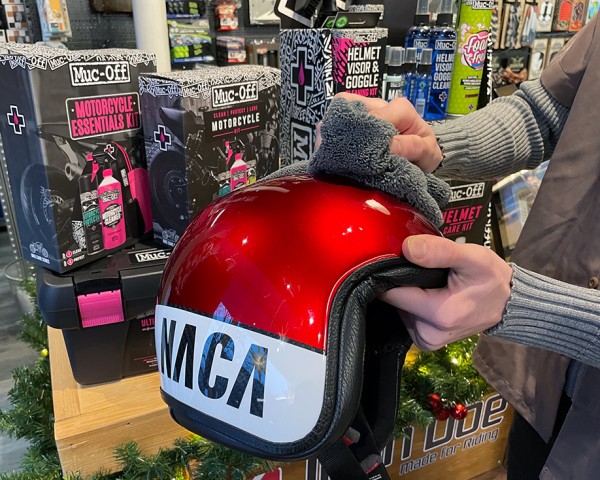Helmet guide: tips on buying a motorcycle helmet and helmet maintenance
Fitting and fit - what you should pay attention to
Fitting and fit of the new helmet: A new helmet should fit somewhat tightly, because through use the EPS inner shell will still adapt to the individual head shape. If the helmet sits pleasantly loose or particularly comfortable during the first fitting, it is probably too big and we advise exchanging it for the next size down. The effect of "wearing in" can be accelerated by applying pressure with the thumb at certain points. The cm figures of the head circumference are always only an indicator, but never take into account the shape of the helmet shell or the individual head shape. A brief try-on says nothing about the final fit of a new helmet. Therefore, wear the helmet at home for a few hours and occasionally take it off again. Only then decide whether the correct helmet size has been selected. Note: The right of withdrawal expires as soon as the helmet has been test driven. It is not possible for us to put "used" helmets back on sale.
Look - does the helmet suit me?
Of course, safety comes first with a motorcycle helmet. After you have found a suitable helmet, it's time to look at the optics. The first visual impression of the new helmet is not always the right one. First visual impression of the new helmet: Our customers usually want an optimal helmet look that fits the overall appearance. However, the decision alone in front of the mirror is rarely coherent, because a new helmet is always unfamiliar at first. Tip: Ask another person how you look in profile. Because even the "cool" motorcyclists out there you often only see in profile.
Visor - proper care and maintenance
Dirt and dust on the visor can strongly impair safety. If necessary, clean the visor first by rinsing it under warm water and using a mild soap solution (both the outside and the inside). Then gently wipe dry with a lint-free cotton cloth. The inside of the visor usually has an anti-fog layer. Note: Never use a fleece cloth or aggressive cleaning agents. Do not rub with force, otherwise the coating will be damaged.
Regularly check the strength of the visor screws. The screw thread can be unscrewed by opening and closing the visor. If necessary, hand-tighten the visor screws with a suitable screwdriver. If too much force is applied, the internal thread may be damaged. We generally recommend fixing the visor screws to the thread with a glue dot (e.g. Loctite 243Blue). Painted screws can be protected from unnecessary scratches by wrapping a piece of scotch tape around the screwdriver. Replacement screws can be found for sale in our helmet accessories. Note: The loss of visor screws is not a reason for complaint!
Protection from scratches and damage
The chin strap as well as the lower edge of the helmet can be damaged by friction on Velcro or metal fasteners of a jacket. Please protect this area e.g. by wearing a bandana.
We recommend to always store the helmet in a stable and safe way, even on the road. A fall from waist height can already lead to hidden damage and affect traffic safety. The helmet should be replaced immediately after a traffic accident at the latest. Often the insurance (liability or health insurance) will cover the cost of a new helmet upon presentation of the original purchase receipt. Note: Always keep proof of purchase!
We will be happy to provide you with personal advice by telephone:
+49 (0)40 1899 4311

